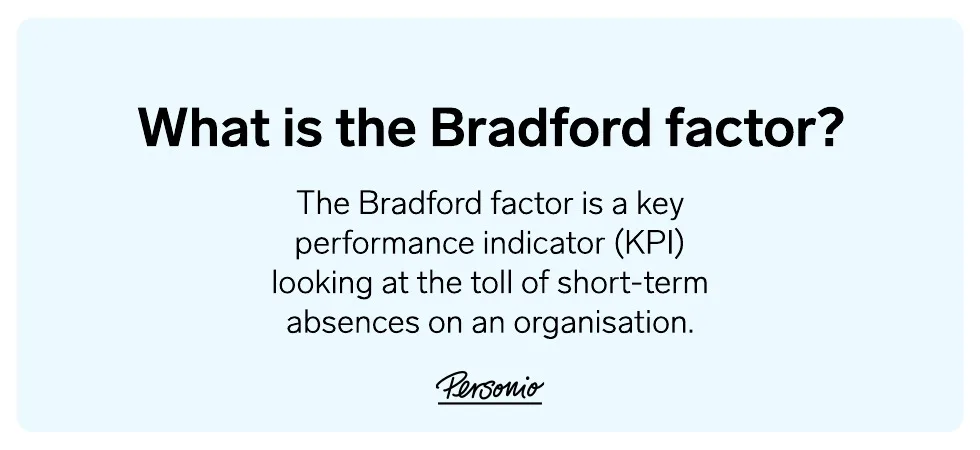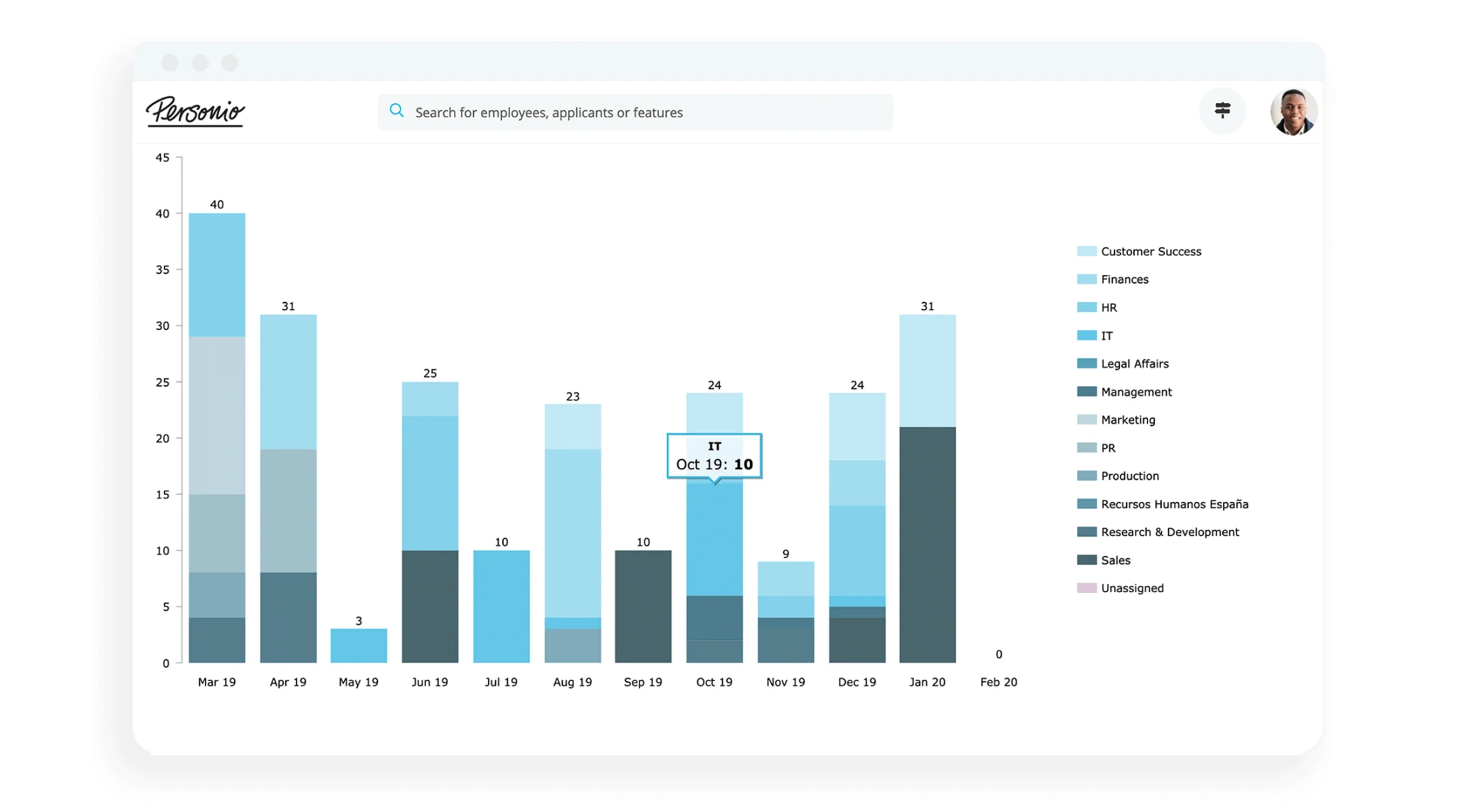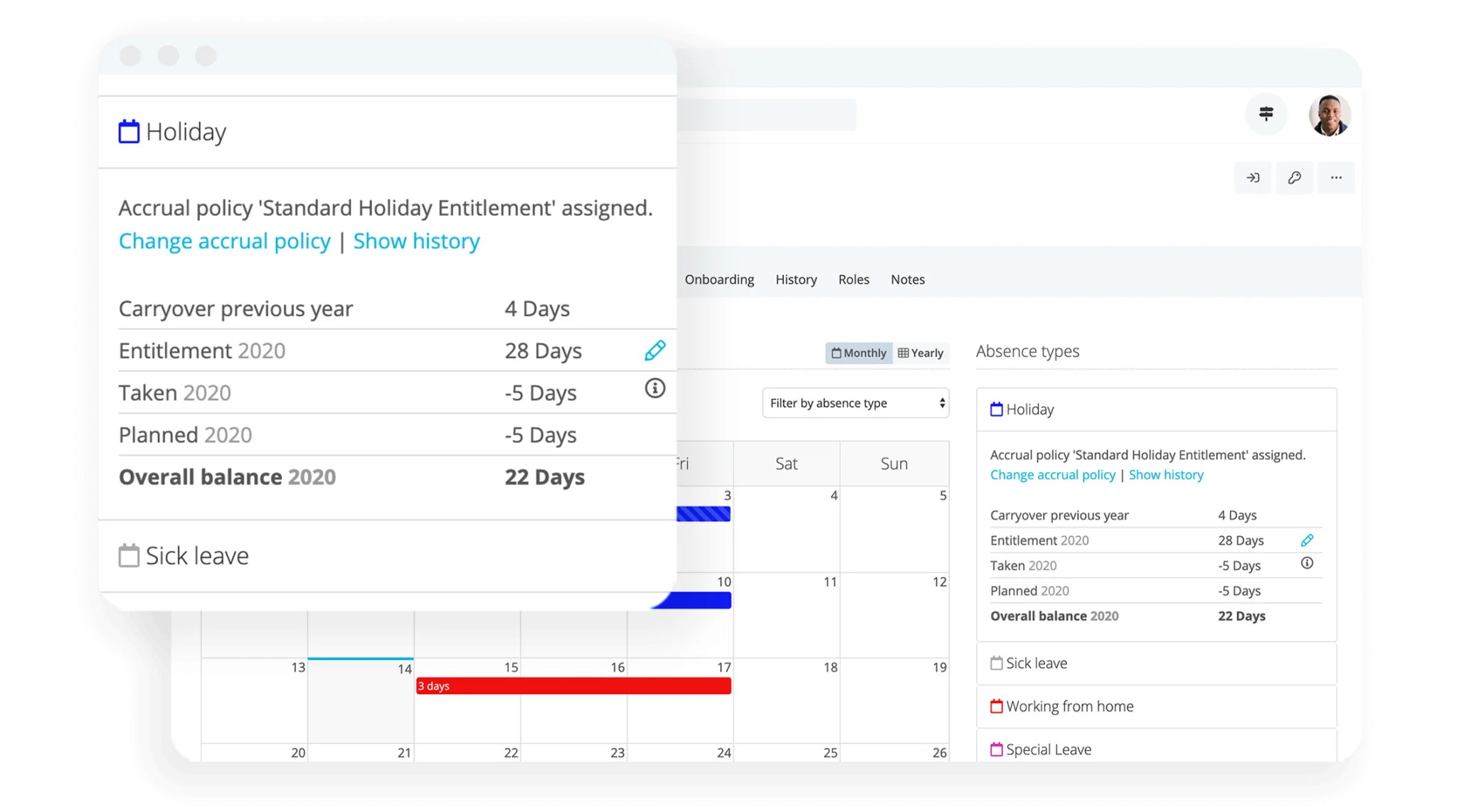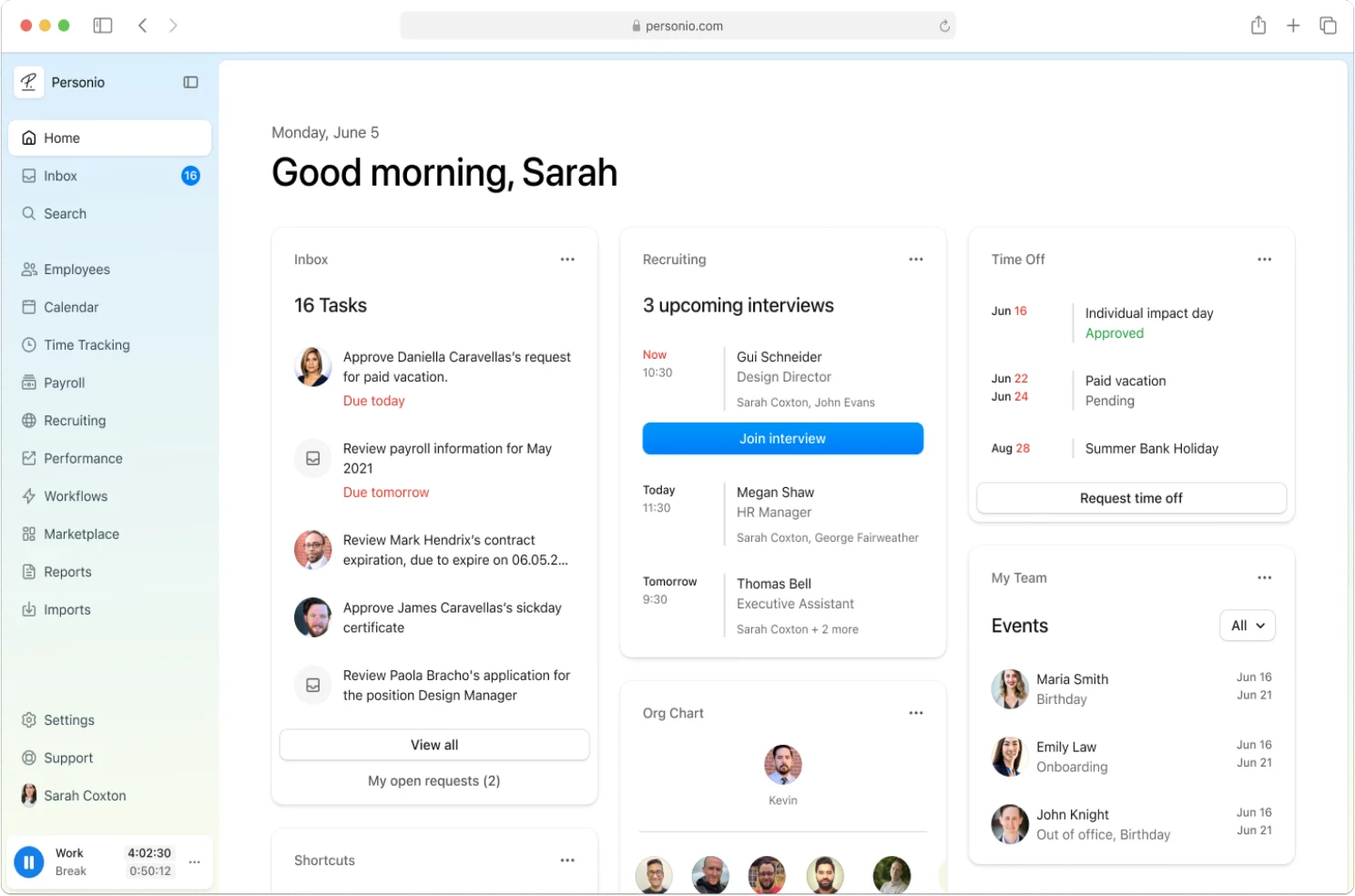Bradford Factor Calculator: Easily Work Out Your Bradford Score
Bradford Factor Calculator
Contents
- 1What is the Bradford factor?
- 2How do you calculate Bradford factor scores?
- 3Bradford factor calculator: Try it now
- 4What is a ‘good’ or ‘bad’ Bradford score?
- 5How do you evaluate various Bradford scores?
- 6Bradford factor pros and cons
- 7Bradford scores and holistic absence management
- 8Manage absences with a leave management system
What should you do with Bradford factor scores? Compile them in a list, make decisions based on them, or throw them all in the bin? There’s a lot of opinions out there and a lot to dive into. Today, we’ll get a handle on it.
Absences come in all shapes and sizes. Personio can help track them all.What is the Bradford factor?

The Bradford Factor is an absence-oriented key performance indicator (KPI) designed to put a number behind the disruptive potential of ‘one-off’ absences when taken together. It is designed on the premise that short-term absences are more disruptive for an organisation than long-term ones (like a planned vacation).
For many employers, absenteeism can be a crucial issue that affects both performance and company culture. That is why knowing more about it and how to measure it is top-of-mind for so many.
Essentially, having a compendium of Bradford scores is an easy way to get a handle on absenteeism and quantify it in a meaningful way for your organisation.
How do you calculate Bradford factor scores?

How do you calculate your Bradford score? The formula is as follows:
S² x D = B
Let’s break down each of these variables:
S stands for ‘spells,’ which are absences over a set period
D is the total number of days of absence over the same period
B is the resulting Bradford Factor
In most cases, this set period is one year (52 weeks).
Bradford factor score example
Here is an example to help illustrate finding an employee’s Bradford score…
Let’s say we have two employees: Employee A and Employee B. Employee A recently came down with an illness and was sick for 10 days. Employee B was in relatively good health, but in that same period was sick on three separate occasions for a total of 10 days.
There Bradford scores would break down as follows:
Employee A: 1(1) x 10 = 10
Employee B: 3(3) x 10 = 90
In this case, Employee B’s multitude of absences, even though it amounted to the same number of days, would theoretically be more disruptive to business.
Bradford factor calculator: Try it now
Using the calculator below, you can begin to use the Bradford Factor and start to collect important scores for your organisation...
Bradford Factor Calculator
What is a ‘good’ or ‘bad’ Bradford score?
Essentially, a higher Bradford score means a potentially more damaging effect on the business. This isn’t always the case, but let’s try and set some benchmarks:
| Score | What It Means |
|---|---|
| Under 50 | Typical score for an average employee |
| Over 50 | A threshold for concern or basic monitoring |
| Over 100 | Potentially the start of a trend that requires keeping an eye on |
| Over 200 | Some kind of action may need to be required |
| Between 200-500 | A signal that something is going on that needs to be addressed |
| Over 500 | Potential grounds for dismissal or an in-depth meeting |
Keep in mind though, that this is far from set in stone. No two Bradford scores may be the same and they may require a lot of context behind them. A Bradford score alone is not an indicator of how ‘good’ or ‘bad’ an employee is, it should be used more in context and as a signal that triggers actions that lead to decisions (and not decisions in and of themselves).

How do you evaluate various Bradford scores?
Some companies may choose to identify trigger points with various Bradford scores, meaning that when an employee has reached a high enough number, something occurs. Here’s an example of what might happen:
| Score | Potential Action |
|---|---|
| 100 | Absence Review |
| 200 | Warning (Verbal/Written) |
| 400 | In-Depth Meeting |
| 700 | Potential Dismissal |
The issue is that these numbers are not set in stone, and the formula itself is relative to how a business or organisation chooses to weigh it. While the scores typically climb with the severity of the action taken, this is only a rough example of how it might work.
Bradford factor pros and cons
The major benefit is that the Bradford factor is easy. Bradford scores can offer a very quick, and very streamlined, way of calculating absences and having a very rough idea of what it means to the business.
The major negative is that it lacks nuance. It doesn’t have the capacity to weigh different kinds of absences, treating a day off work the same as it would a severe illness, a tragedy, or disability. They all appear the same.
Think of Bradford scores as a signal. If an employee has an incredibly high Bradford score, it may not be enough evidence to warrant dismissal (or even a warning). It does, however, signal to HR that they may need more context and understanding of what is happening.
It can also reveal patterns within teams and departments of an organisation, again serving as a signal that perhaps it is worth understanding why these things are happening. In and of itself though, the Bradford factor is not definitive reasoning for punishment.
For instance, if HR noticed that certain months or time periods varied wildly in terms of absences, they could act more proactively in terms of offering flexible work, or developed initiatives to help with mental health in the workplace.
In its best light, then, the Bradford Factor can be an empowering tool for HR to focus more on strategy rather than highlighting specific absences among employees.
The Bradford factor is potentially best used as a measuring tool that informs a much larger discussion around absence during performance reviews.
Bradford scores and holistic absence management

The Bradford Factor is merely one element of absence management. It needs to be used in coordination with larger efforts and a more nuanced approach to tracking and evaluating when employees are away.
That said, building that system takes time. Using Personio's absence management feature, HR can have a quick glimpse at who is in the office, who is out, and what those trends mean over time. It means fewer calculations and cleaner data for your team.
Manage absences with a leave management system
Personio is an all-in-one HR software that helps upgrade your people operations for now and the future.
That includes a leave management software that can manage holiday requests, track every kind of leave (from emergencies to sicknesses and bank holidays) alongside all of your other core HR processes.
Over 10,000 businesses in the UK and Europe trust us to help. Get in touch with one of our helpful HR experts today, or start your own free trial to give Personio a go right away.
Disclaimer
We would like to inform you that the contents of our website (including any legal contributions) are for non-binding informational purposes only and does not in any way constitute legal advice. The content of this information cannot and is not intended to replace individual and binding legal advice from e.g. a lawyer that addresses your specific situation. In this respect, all information provided is without guarantee of correctness, completeness and up-to-dateness.

